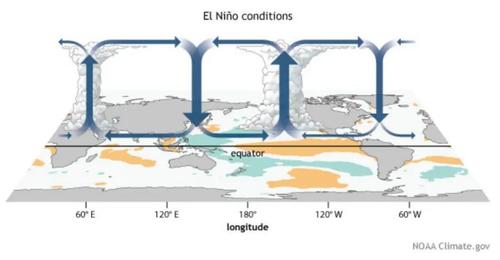
IPFS News Link • Weather News - Links - History
La Niña Ended In May, So When Is The Break From This Heat In The US?
• Zero HedgeAuthored by Mike Shedlock via MishTalk.com,
SciJinks discusses the Difference Between El Niño and La Niña.
In Spanish, El Niño means "the little boy" and La Niña means "the little girl." They are sort of like a brother and sister. Like many siblings, the two weather patterns are opposites in almost every way. La Niña causes water in the eastern Pacific to be colder than usual. In the same region, El Niño can cause the water to be warmer than usual. Areas that are hit with drought during La Niña years are pummeled with rain in El Niño years.
El Niño and La Niña: Frequently Asked Questions
Climate.Gov discusses Frequently Asked Questions.
El Niño and La Niña are opposite phases of a natural climate pattern across the tropical Pacific Ocean that swings back and forth every 3-7 years on average. Together, they are called ENSO (pronounced "en-so"), which is short for El Niño-Southern Oscillation.
The ENSO pattern in the tropical Pacific can be in one of three states: El Niño, Neutral, or La Niña. El Niño (the warm phase) and La Niña (the cool phase) lead to significant differences from the average ocean temperatures, winds, surface pressure, and rainfall across parts of the tropical Pacific. Neutral indicates that conditions are near their long-term average.
El Niño Conditions
During El Niño, the surface winds across the entire tropical Pacific are weaker than usual. Ocean temperatures in the central and eastern tropical Pacific Ocean are warmer than average, and rainfall is below average over Indonesia and above average over the central or eastern Pacific.




































